We are in the era of abstraction, wherein end-users do not care about the hidden details as long as their tasks are fulfilled.
Compactness is one of the precursors that has led to the conceptualization of APIs, the preferred method for integrating internal and external digital assets and binding applications.
Consider the following restaurant example: It is a venue where individuals can speak with waiters about what they want, place an order from a menu, and then sit down to enjoy their meal. Guests are not required to understand what goes on behind the scenes when orders are placed, the kitchen operation, or any other little chores in the restaurant.
The API consists of the waiter and the menu: it informs consumers of their options. The waiter communicates and delivers those options while also taking care of the money.
When it comes to the vast majority of companies, APIs are simply pieces of code that aid in the performance of tasks. An API management tool can help an organization achieve data interoperability between various apps.
In today’s hyper-connected world, you need to handle APIs with greater refinement if you’re involved in the API economy and want to start seeing APIs as a source of revenue or growth.
What is API Analytics?
API analytics and monitoring encompass engineering-focused metrics like performance, uptime, product metrics, retention, and developer conversion.
API analytics allows you to filter, sort, and aggregate API event data before presenting the results in correlated charts, tables, and maps.
To help you manage service levels, set quotas, establish controls, set up security policies, manage communities, and analyze trends; and several methods for performing such analysis, ranging from basic SQL and Excel to purpose-built API analytics platforms.
API Analytics KPI (Key Performance Insights)
API analytics uncovers surprising trends that help both IT and business leaders optimize the KPIs they utilize analytics to generate. Let’s look at some Key Performance Insights while analyzing and monitoring your APIs.
KPIs for operations
Call latency (average and maximum): P1 latency, also known as elapsed time, is a critical metric that influences customer experiences. Breaking this KPI down into detailed metrics (e.g., networking times, server process, and upload download speeds) can provide additional insights for measuring the performance of APIs.
Total pass and error rates: The success of API Operations can be measured as the function of the number of API calls that result in non-200 status codes while assisting organizations in determining how buggy or error-prone an API is. To track total pass and error rates, it is necessary first to understand the types of errors that occur during API usage.
API Service Level Agreements (SLA): While one of the most elementary metrics, API Service Level Agreements (SLA) are the benchmark for measuring a service’s availability. Many enterprise SLAs leave little to no room for error for software providers.
To provide this level of service, a provider’s upstream APIs must be operational, which necessitates API monitoring and analytics to ensure that the service is running well and swiftly diagnosing any issues.
Adoption KPI
KPIs for API Adoption Developers: This goal is commonly aimed at improving API adoption. Enterprises must consider using this metric in conjunction with other metrics that confirm the business utility of a given API.
API traffic: By continuously monitoring, improving, and driving value through APIs, this target can assist API programs in developing a strong DevOps culture. Enterprises should consider coupling this goal with related metrics up and down the value chain, such as backend reliability and scalability.
API product adoption: Key patterns in API adoption can be identified through retention and churn. A product with a high retention rate, for example, is closer to finding its market fit than a product with a churn problem. Instead of subscription retention, product retention tracks the actual usage, such as an API.
KPIs for Business Impact
Revenue, both direct and indirect: Tracking how APIs contribute to income is one of the purposes of these goals. Businesses can directly monetize APIs by offering them as paid services or goods to partners and external developers when they provide access to scarce and valuable datasets or particularly important and difficult-to-replicate functionality.
However, an API can often generate more value if enterprises focus on adoption rather than upfront revenue.
Partners: Use this target to increase partner outreach, drive adoption, and demonstrate success to existing business units.
Cost: By reusing APIs rather than starting new custom integration efforts for each new project, businesses can save money.
When developers use standardized APIs to connect to existing data and services, enterprises can identify instances where reusable APIs have saved money that would otherwise have gone to new integration projects by tracking API usage.
Similarly, because APIs automate and accelerate many processes, businesses can identify how specific APIs contribute to accelerated development cycles and quick completion of business processes and the number of resources saved in the process.
Let’s now look at the top API analytics solutions.
Moesif
Moesif is an excellent API monitoring framework. Not only can one trace every one of the requests (complete with request/response payloads), but one can also query by any param.
In seconds, one can build queries like “Show me the monthly requested entities by company A with a response time greater than X.”
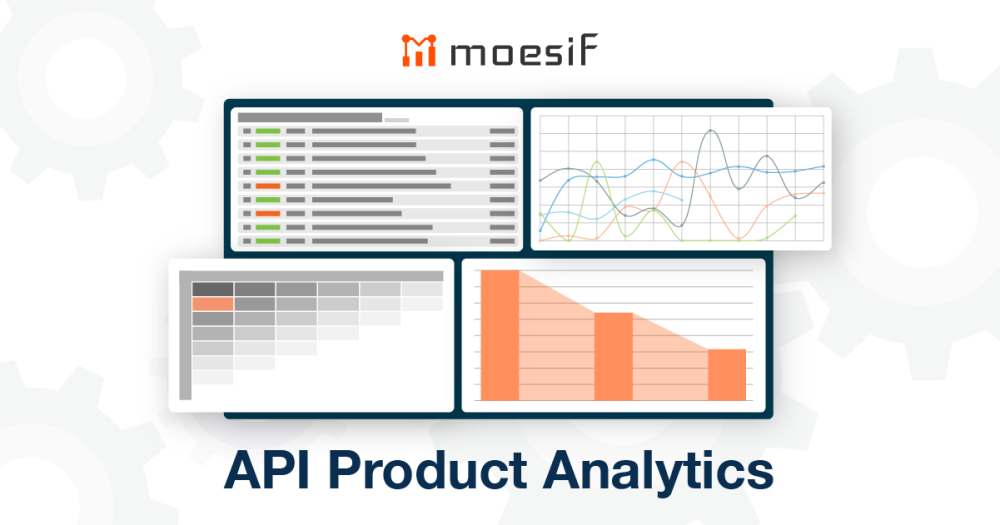
The query user interface is straightforward and powerful, supporting operations and more. Moesif’s ease of integration with the Application is another value add. One can integrate Moesif with all environments. All of the requests one makes to Moesif are listed and searchable.
APImetrics
APImetrics has built the first end-to-end performance monitoring system to assist developers, API providers, and organizations. Using APImetrics, you can automate the testing of the latency and performance of APIs you provide or use and then offer real-time data to your clients and partners via dashboards and reporting APIs.
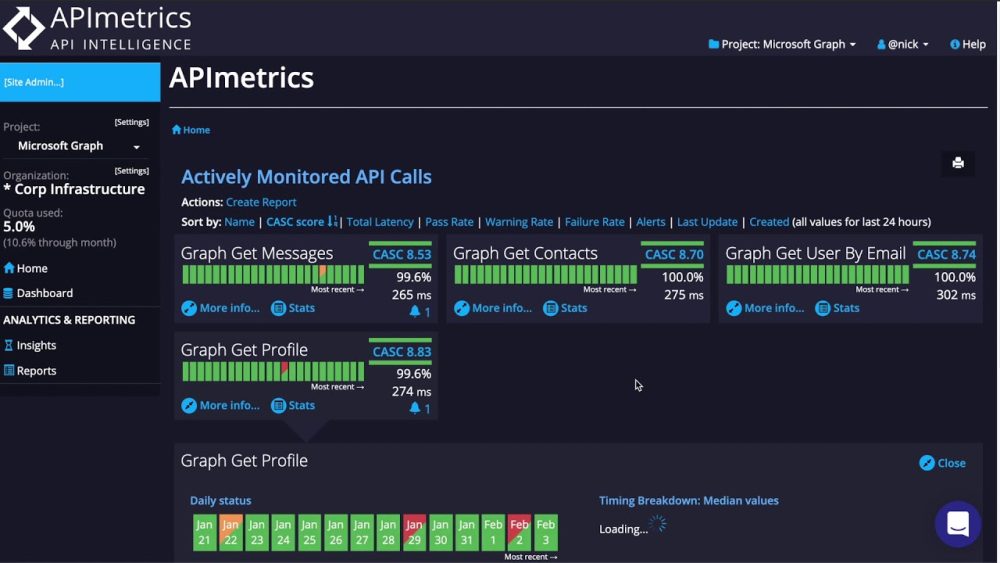
APImetrics’ API monitoring gives you the ability to catch issues as soon as they arise before they have a chance to harm your customers or damage your company’s reputation.
Nevatech Sentinet
Nevatech Sentinet is an API management and governance solution that includes REST and SOAP standards and Microsoft-specific communication protocols and security models.
Data visualization can also be accomplished using Sentinet’s built-in reports and dashboards. Sentinet can be enhanced by adding your reports.
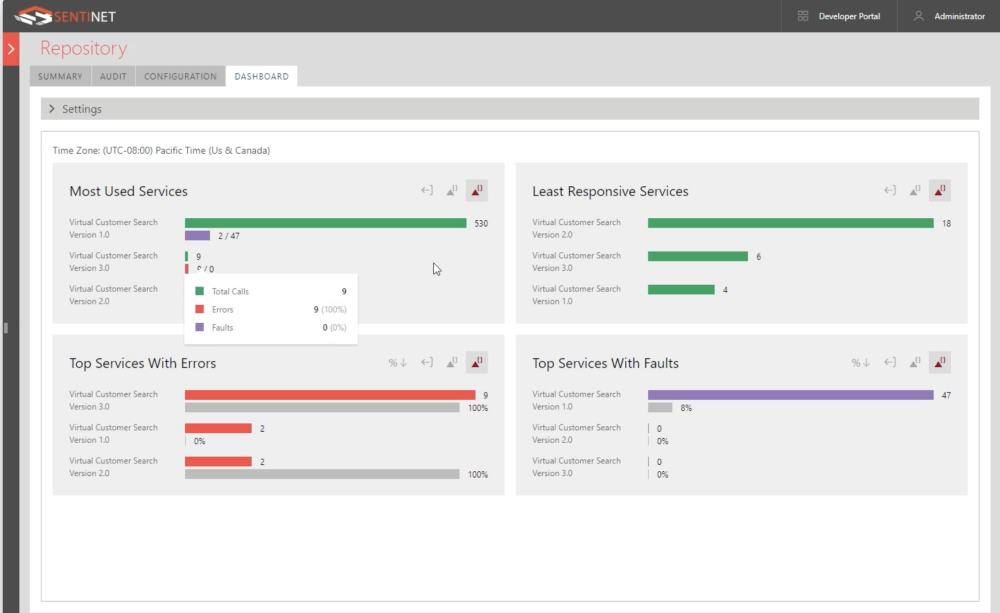
With Sentinet predictive analysis, you can anticipate future usage, performance, and scalability requirements. Key Performance Indicators (KPIs) can be easily classified and calculated in the Dashboard View.
Smartbear ReadyAPI
ReadyAPI lets teams set up, manage, and run automated functional, security, and performance tests in a single place. ReadyAPI speeds up API quality for Agile and DevOps software teams.
One can add API definitions like OpenAPI/Swagger or AsyncAPI, run tests and record live API traffic, or virtualize web services to remove pipeline dependencies.
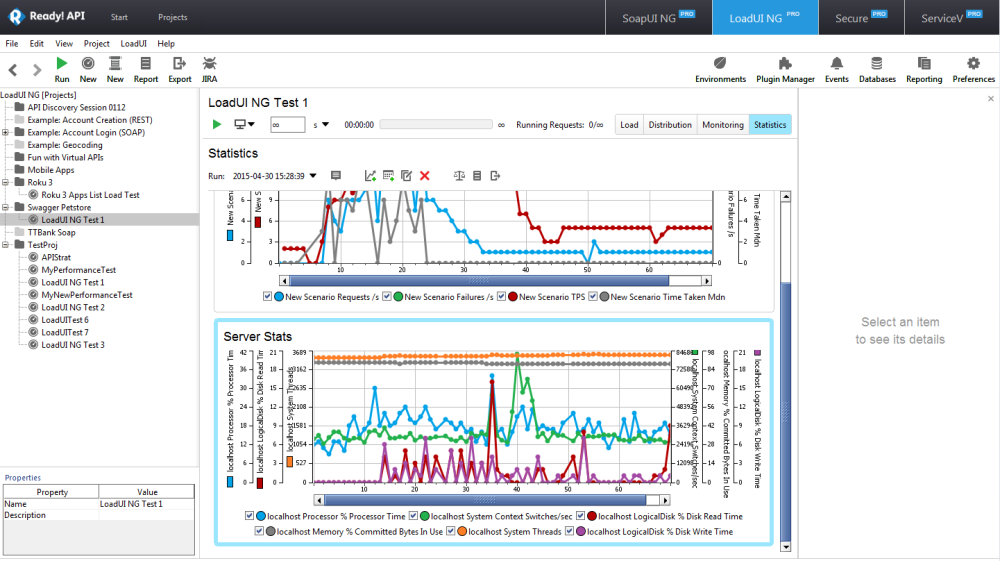
A simple click lets you make detailed, data-driven functional API tests. You can also add security scans with a single click. Ensure your API can handle real-world traffic run load, stress, and spike tests.
RESTful, SOAP, TCP, JMS, and other web services can be virtualized so that you don’t have to use them in your testing pipeline.
IBM API Connect
IBM API Connect is a fantastic tool for developing, administering, and monitoring API endpoints, and it is available for free. It is compatible with API authentication security mechanisms such as OAUTH, MTLS, JWK, etc. This tool lets you customize APIs by utilizing YAML and graphical user interface components.
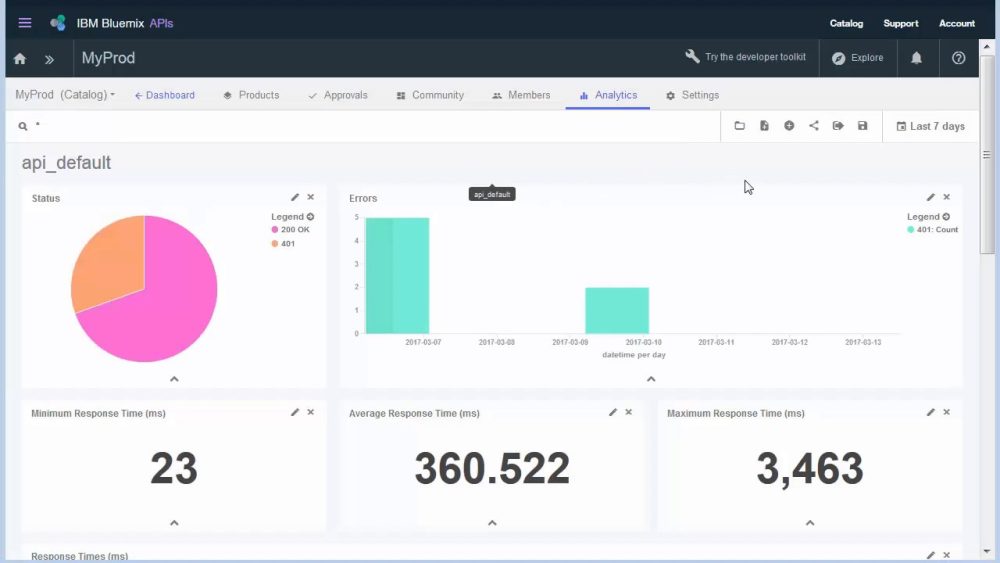
IBM API Connect enables you to create, manage, secure, and socialize APIs across hybrid cloud environments using a single platform. Model-driven technologies make identifying existing APIs and backend data sources easier than traditional methods.
One can create a developer portal for your APIs to help advertise, market, and sell. Managing API consumption privileges to monitor who is using your APIs, when they are being used, and how frequently they are used becomes an easy task. You can obtain comprehensive data on API usage and service quality by carefully filtering searches and navigation.
Mulesoft Anypoint
Anypoint API Manager is a part of the Anypoint platform that lets you manage, control, and protect APIs. API analytics enables you to see how APIs are used and how well they work.
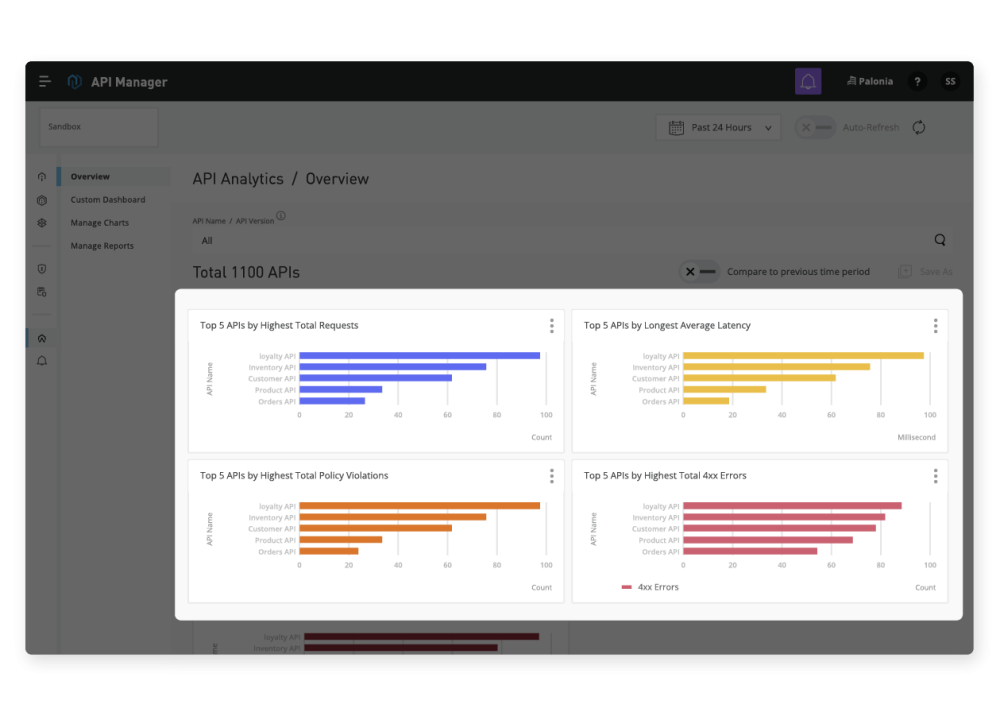
You can also see how many people use them and how well they work. API Manager lets you make your dashboards, change charts, and make reports. An API Manager report includes the following: API data analytics, API event tracking, and API Manager charts are some things you can do with the data from APIs.
Google APIGEE
As a leading API management platform, Apigee enables digital businesses to thrive. Many Fortune 100 companies and well-known brands like First Data, Live Nation, Shell, Burberry, eBay, and Walgreens use this service daily. California-based Apigee employs more than 400 people around the world.
In addition to API developer management and analytics, Apigee Edge provides a simple-to-use yet powerful API administration platform. The program can handle the rise in user traffic well.
It provides an API development site for internal use, making it easier for employees to share information. Access control, OAuth, API key verification, and XML/JSON threat protection are just a few of the techniques available to protect backends, APIs, and communications.
Conclusion 👇
Being successful with an API product varies from person to person, and your key performance indicators (KPIs) for the product you use will differ from another company’s.
People in the fintech industry might be interested in learning how many consumers have used their API to make payments. In the case of an e-commerce company, you’ll want to know how many people signed up for your newsletter using an email API.
API analytics are used to achieve your company’s goals, regardless of the situation. Just because you have an API doesn’t mean that a nice thing will happen to you right away. Using your new company API in a data-driven, analytical, and deliberate manner will reap the benefits.
You may look at some of the best tools to build APIs.



